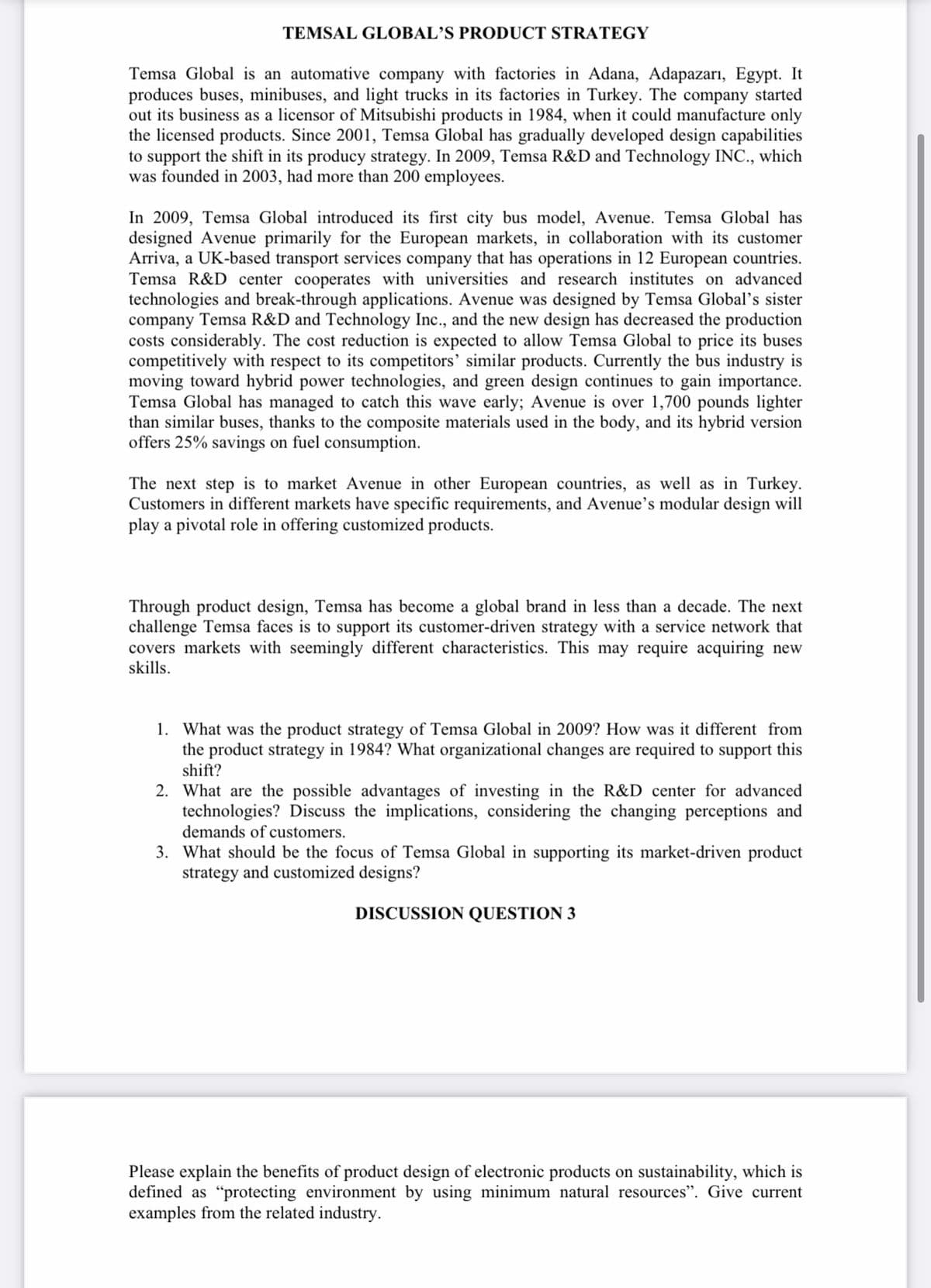1. What was the product strategy of Temsa Global in 2009? How was it different from the product strategy in 1984? What organizational changes are required to support this shift? 2. What are the possible advantages of investing in the R&D center for advanced technologies? Discuss the implications, considering the changing perceptions and demands of customers. 3. What should be the focus of Temsa Global in supporting its market-driven product strategy and customized designs?
1. What was the product strategy of Temsa Global in 2009? How was it different from the product strategy in 1984? What organizational changes are required to support this shift? 2. What are the possible advantages of investing in the R&D center for advanced technologies? Discuss the implications, considering the changing perceptions and demands of customers. 3. What should be the focus of Temsa Global in supporting its market-driven product strategy and customized designs?
Purchasing and Supply Chain Management
6th Edition
ISBN:9781285869681
Author:Robert M. Monczka, Robert B. Handfield, Larry C. Giunipero, James L. Patterson
Publisher:Robert M. Monczka, Robert B. Handfield, Larry C. Giunipero, James L. Patterson
ChapterC: Cases
Section: Chapter Questions
Problem 5.1SA
Related questions
Question

Transcribed Image Text:TEMSAL GLOBAL’S PRODUCT STRATEGY
Temsa Global is an automative company with factories in Adana, Adapazarı, Egypt. It
produces buses, minibuses, and light trucks in its factories in Turkey. The company started
out its business as a licensor of Mitsubishi products in 1984, when it could manufacture only
the licensed products. Since 2001, Temsa Global has gradually developed design capabilities
to support the shift in its producy strategy. In 2009, Temsa R&D and Technology INC., which
was founded in 2003, had more than 200 employees.
In 2009, Temsa Global introduced its first city bus model, Avenue. Temsa Global has
designed Avenue primarily for the European markets, in collaboration with its customer
Arriva, a UK-based transport services company that has operations in 12 European countries.
Temsa R&D center cooperates with universities and research institutes on advanced
technologies and break-through applications. Avenue was designed by Temsa Global's sister
company Temsa R&D and Technology Inc., and the new design has decreased the production
costs considerably. The cost reduction is expected to allow Temsa Global to price its buses
competitively with respect to its competitors' similar products. Currently the bus industry is
moving toward hybrid power technologies, and green design continues to gain importance.
Temsa Global has managed to catch this wave early; Avenue is over 1,700 pounds lighter
than similar buses, thanks to the composite materials used in the body, and its hybrid version
offers 25% savings on fuel consumption.
The next step is to market Avenue in other European countries, as well as in Turkey.
Customers in different markets have specific requirements, and Avenue's modular design will
play a pivotal role in offering customized products.
Through product design, Temsa has become a global brand in less than a decade. The next
challenge Temsa faces is to support its customer-driven strategy with a service network that
covers markets with seemingly different characteristics. This may require acquiring new
skills.
1. What was the product strategy of Temsa Global in 2009? How was it different from
the product strategy in 1984? What organizational changes are required to support this
shift?
2. What are the possible advantages of investing in the R&D center for advanced
technologies? Discuss the implications, considering the changing perceptions and
demands of customers.
3. What should be the focus of Temsa Global in supporting its market-driven product
strategy and customized designs?
DISCUSSION QUESTION 3
Please explain the benefits of product design of electronic products on sustainability, which is
defined as "protecting environment by using minimum natural resources". Give current
examples from the related industry.
Expert Solution
This question has been solved!
Explore an expertly crafted, step-by-step solution for a thorough understanding of key concepts.
Step by step
Solved in 2 steps

Knowledge Booster
Learn more about
Need a deep-dive on the concept behind this application? Look no further. Learn more about this topic, marketing and related others by exploring similar questions and additional content below.Recommended textbooks for you

Purchasing and Supply Chain Management
Operations Management
ISBN:
9781285869681
Author:
Robert M. Monczka, Robert B. Handfield, Larry C. Giunipero, James L. Patterson
Publisher:
Cengage Learning

Purchasing and Supply Chain Management
Operations Management
ISBN:
9781285869681
Author:
Robert M. Monczka, Robert B. Handfield, Larry C. Giunipero, James L. Patterson
Publisher:
Cengage Learning